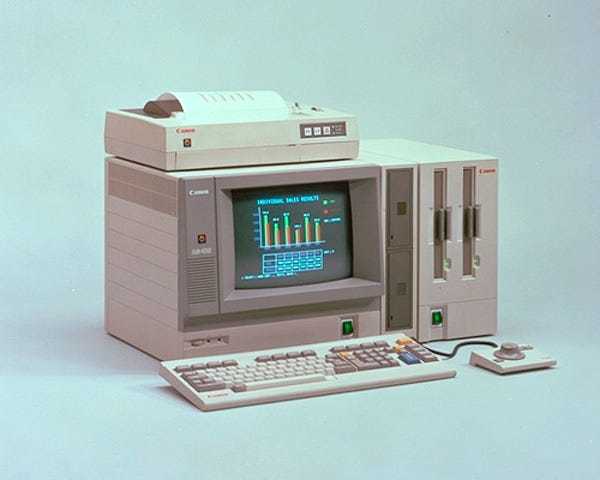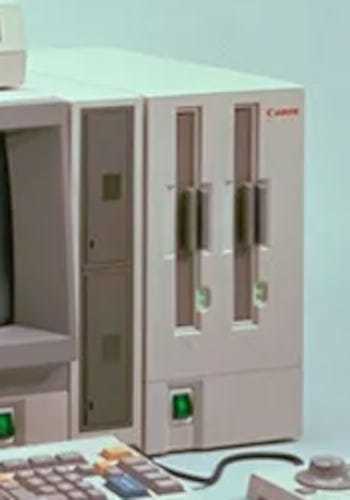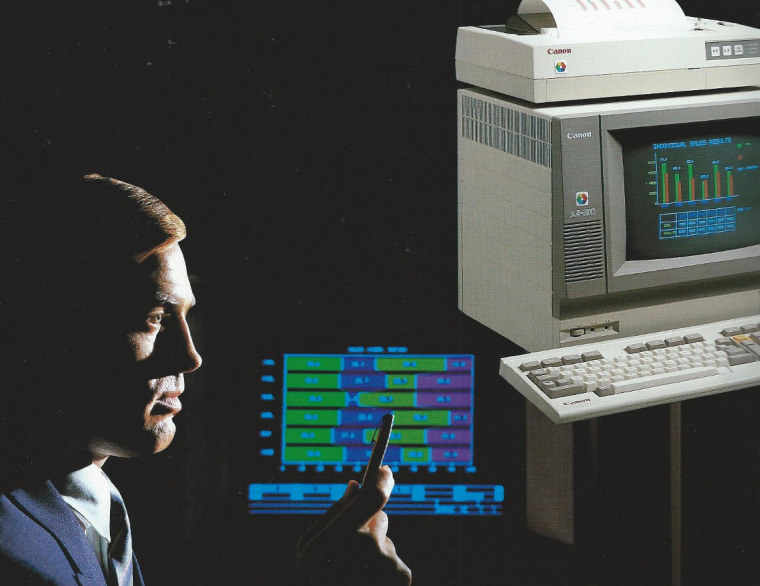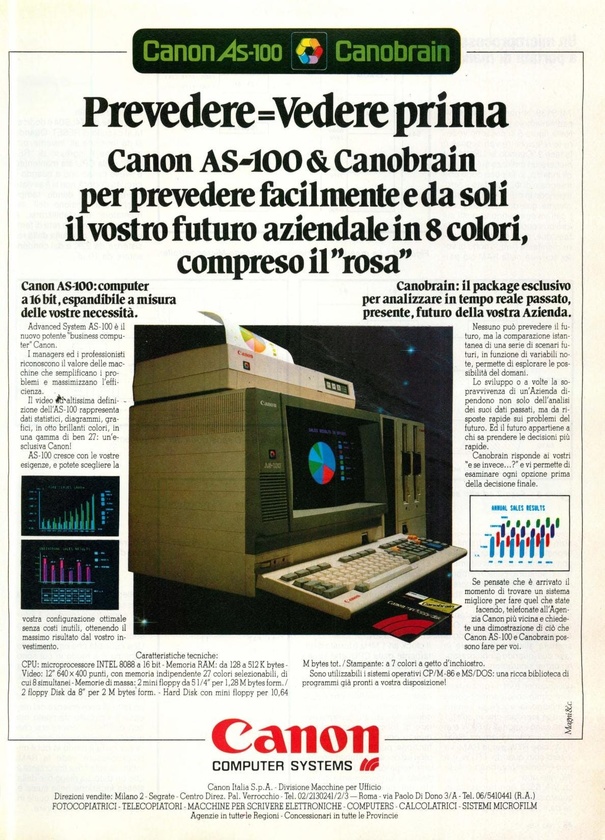In 1982, Canon released the AS-100 computer. A fascinating — and awesome looking — computer workstation that was aimed squarely at the business market.
Let’s take a close look at the AS-100 — the second computer released by the famous printer company. A weird, wonderful, extraordinarily customizable machine capable of running both CP/M and MS-DOS… but which was not exactly IBM PC Compatible.

Ain’t she a beauty?
So, the Canon AS-100 is not an IBM Compatible system (at least… not completely). But what sort of specs did that little beast have?
Intel 8088 CPU (with an optional 8087 math co-processor)
128 KB RAM (expandable to 512 KB using a 384 KB expantion)
An 8 color (with a full palette of 27 colors), 640x400 display (with a cheaper, black and white monitor option available)
Capable of running both MS-DOS and CP/M (though not compatible with all DOS software that relied on IBM PC Compatible hardware)
Nothing too crazy here — though definitely pretty beefy for 1982!
But look at that picture up there. Look at the “mouse”. Here. Let me zoom in for you. ENHANCE!

Well, what do we have here? That’s not a mouse at all! It’s a jog dialer! A little wheel you can turn (not unlike old Atari 2600 paddle controllers). This was called the “A-1100 Pointing Device”.
The storage options were equally fantastic and unusual. Let’s take a closer look. ENHANCE!

There were a whole host of different storage options for the AS-100:
5 1/4” floppy drives (640 KB, Double Sided, Double Density).
You could purchase an expansion unit with either one floppy drive… or two.
8” floppy drives (1.2 MB).
What’s wild… is you could purchase an expansion unit with a single 8” drive… or two 8” drives… or three 8” drives… or, I kid you not, four 8” drives in a single (huge) chasis.
A Winchester Hard Disk (8.2 MB)

And you could combine them together. Which means you could have a LOT of storage drives on this badboy.
Oh, and get this. The full rig weighed a whopping 66 lbs (give or take, depending on which options you selected).
All of the pictures showcased either a Canon Daisy Wheel or Ink Jet printer.
Because this is Canon. And they sell printers. But, technically, you didn’t need to have a printer connected.
The Canon Software
What many people forget is that Canon made PC software — that they either shipped with or sold for the AS-100 — back then.
This included Canobrain (which was a database package with color charting), CanoCalc, CanoGraph, CanoWriter, and CanoBasic. Cano-Everything. All very business-oriented packages. This was, after all, a very professional computer.

How much did a standard configuration with a color screen set you back? Over $4,000 USD. And that’s 1982 dollars.
In the end, the Canon AS-100 was not a huge seller — likely due to the fact that it was not “IBM PC Compatible” and, thus, had compatibility problems with some software. Plus it was expensive. And huge. Also heavy.
But, gosh darn it, it’s still an impressive, gorgeous machine. One that I would not mind having on my desk.
For your viewing pleasure, here is a sampling of magazine advertisements for the AS-100. Enjoy the early 1980s goodness.
















